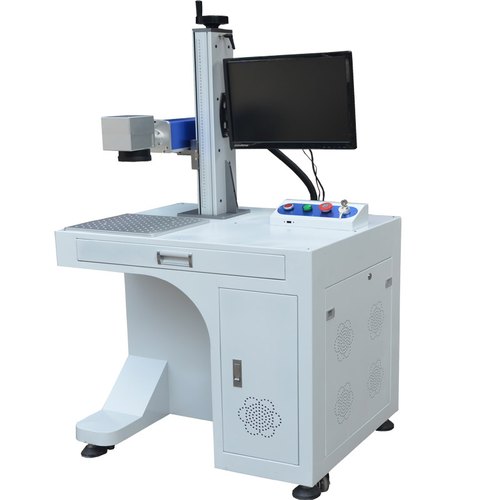blob-article

In the metal processing world, precision and efficiency determine the quality and speed of production. Therefore, the fiber laser cutting machine as an evolved component in this industry has changed the course of the game in cutting and engraving practices. This technology advanced machine substituted traditional cutting because it improved productivity, reduced costs, and enhanced quality for businesses. Fiber laser technology changes the way to cut and engrave metals as you are part of metal fabrication, automotive, aerospace, or jewelry making.
What is a Fiber Laser Cutting Machine?
A fiber laser cutting machine is a high-powered laser using the technology of an optical fiber to produce the intense beam that then focuses this light onto any material, including metals, thus giving precise cuttings and etching. Notably, CO2 lasers as well as some mechanical cutting will always be replaced by fiber lasers as they happen to be quite efficient, speedy, and exact for industries wanting metal processing high in quality.
Advantages of Fiber Laser Cutting Machine in Metal Cutting
1. Precision and Accuracy
Fiber laser cutting machines can be used to create the most detailed cuts with extreme sharp focus, bringing very minimal material wastage in cutting with the laser beam. This has made it quite ideal for use in applications that require high precision manufacturing, like aerospace and medical devices.
2. High Speed and Efficiency
Compared to traditional cutting methods, fiber laser machines offer significantly higher speeds. They can cut through thick and thin metals with ease, reducing processing time and increasing productivity. The high-speed nature of these machines makes them perfect for mass production industries.
3. Low Maintenance and Operational Costs
Fiber lasers require minimal maintenance due to their solid-state design. Unlike CO2 lasers, which require regular gas refills and mirror alignment, fiber lasers have a long lifespan and lower operating costs. This makes them a cost-effective investment for businesses.
4. Versatility in Cutting Different Metals
A fiber laser cutting machine cuts multiple metals: stainless steel, aluminum, copper, and brass, among others. It cuts them without the generation of reflective products, meaning they do not become damaged from any reflective product of the material itself.
5. Energy Efficiency
Fiber laser machines consume less energy than traditional cutting systems. This means not only saving on electricity but also being environmentally friendly for businesses seeking to reduce carbon production.
The cutting function is but one of the most common uses of a fiber laser machine; engraving applications are also popular. Laser engraving, in any case-industrial marking, branding, or decorative purposes, is unmatched for precision and durability.
6. Permanent Markings with High Resolution
This ensures high-quality permanent markings on the metal surface, which is quite significant for durable product identification purposes in automotive, aerospace, and electronics manufacturing.
7. Speed and Efficiency in Engraving
Just like cutting, fiber lasers offer high-speed engraving capabilities. This allows businesses to process large volumes of products efficiently while maintaining consistent quality.
Applications of Fiber Laser Cutting and Engraving
Due to their sophisticated features, fiber laser machines can be used in several sectors:
-
Automotive: cutting and engraving parts, nameplates, and chassis for automobiles.
-
Aerospace: precision cutting of aircraft components, and marking of critical parts to track.
-
Jewelry making: engraving designs on gold, silver, and platinum.
-
Medical Industry: marking surgical instruments and medical equipment to be up to standard.
-
Electronics Industry: Serial number and barcode engraving on circuit boards and electronic components.
Laser Marking: A Basic Application of Fiber MachinesLaser
In addition to cutting and engraving, laser marking is another basic application of the fiber laser. Laser marking refers to creating permanent marks on materials that use a laser beam without destroying any material layer. This can be used most extensively for labeling for branding identification as well as for compliance tagging purposes in general industry.
1. High-Quality and Durable Markings
Lasers ensure marking which is clearly permanent and also not fade out over a long period. It is highly necessary for such identification for any medical devices as well as parts for the aerospace industry.
2. Eco-Friendly Process
Fiber laser machine does not generate any waste products because it is a chemical-free and ink-free marking process
3. Application in Various Materials
Laser marking does not only restrict to metals, but it is also applied in plastics, ceramics, and glass. This means that laser marking is the preferable choice for companies that require multiple material processing.
Advanced stages of laser technologies will make more efficient and varied fiber cutting lasers machines in manufacturing. Developing additional functionalities by research on artificial intelligence and automation transforms the entire manufacturing process, turning it towards smart manufacturing requiring minimum human engagement.
The future of fiber laser machines includes:
-
Integration with AI for automated cutting and engraving
-
Enhanced beam quality for ultra-precise applications
-
Reduced energy consumption for sustainability
-
Smarter software for real-time monitoring and direct
Conclusion
The fiber laser cutting machine has revolutionized metal cutting and engraving with superior precision, efficiency, and cost-effectiveness in its performance. It provides uncompromised performance on various industries, from intricate engraving, high-speed cutting, or permanent Fiber laser machine. As technology advances, so will these machines play a more exciting role in modern manufacturing, influencing the future of metal processing with innovation and excellence.

